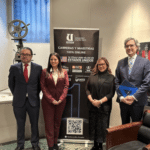In the context of increasing globalization, societies require highly competent and adaptable citizens, who can work in multinational organizations and in intercultural environments (World Trade Organization, 2019). In 2018, the Organization for Economic Co-operation and Development (OECD) emphasized that “citizens need not only the skills to be competitive and ready for a new world of work, but more importantly, they also need to develop analyzing and understanding intercultural issues” (OECD, 2018, p. 22). According to the publication of the Institute for the Future, “Future Work Skills 2020”, the ability to operate in different cultural environments will be one of the most relevance in the workplace for the future (Davies , 2011).
“Citizens need not only the skills to be competitive and ready for a new world of work, but more importantly, they also need to develop analyzing and understanding intercultural issues”.
Currently, organizations face multiple challenges around the constant changes of a highly competitive and globalized world (Irigoytia, 2017). Technology-enhanced globalization has broadened the scope of organizations’ operations, since their stakeholders can be anywhere in the world. Effective communication between people from different cultures has become of paramount importance in the digital age (Thompson et al., 2019). The importance of leadership in intercultural management has been emphasized in the literature.

According to Samovar (2017), as a consequence of globalization and technology, changes in the way of doing business have been accelerating and new challenges have been created, so today’s students need to acquire a set of skills that allow them to implement your vision to effectively lead the organizations of the future. These same authors emphasize that this aspect of global interconnection poses new demands for the directors of these companies, who must respond effectively to complex local, national and international demands, through interorganizational relationships with various groups, both internal and external.
In this way, modern society and especially today’s business environment cannot develop without relating to globalization (Matveev, 2016). Globalization, the increase in migration, the development of transportation systems, and the advancement of information technologies, international employment, student mobility, interdependent economies, foreign travel, political alliances and threats to peace are bringing together people of different cultures and religions with unprecedented regularity (Samovar et al., 2017). As the world has become a global community, cultural interactions have become a natural and necessary process. Communicating with people from different cultures is a common activity in the classroom, in the workplace, in health care, or in politics.





